Discover the serene landscapes of this picturesque Baltic country with our guide to the best camping in Latvia. From dense forests to pristine lakesides, immerse yourself in the great outdoors on your next European adventure.
An introduction to camping in Latvia
On the eastern shore of the Baltic Sea, Latvia, with a population of some 1.8 million, has the third lowest population density in the European Union, after Finland and Sweden. More than half of the total land area is covered by a mix of deciduous and boreal coniferous forests.
Forests have an enormous cultural significance for Latvians. A characteristic sight of autumn is that of locals heading into the forest in search of edible mushrooms, a wicker basket over their arm and a knife close at hand. Foraging for berries is also highly popular, and in spring, birch trees are tapped for their juice. Latvian families are even permitted to cut a Christmas tree from state forests each December.
Latvia’s coast, stretching for 500km around the Gulf of Rīga and along the Baltic Sea, offers rich stretches of white, sandy beaches, often backed by forested dunes. On many of these, you will have the beach almost to yourselves.
This combination of natural wealth and low population density makes Latvia a great option for camping.
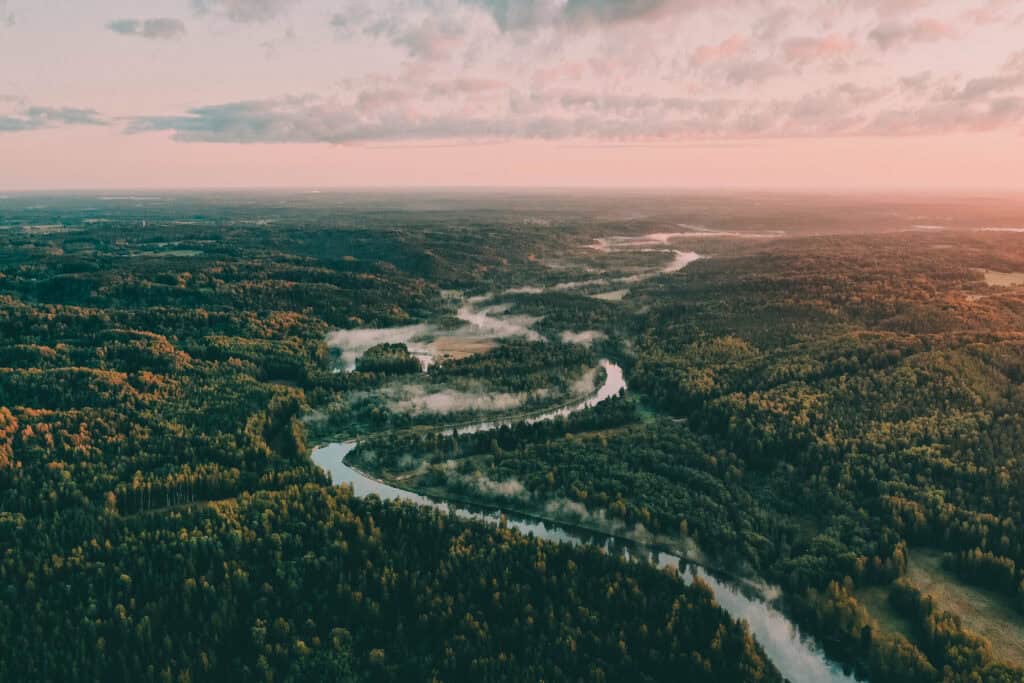
Wild camping in Latvia: rules to live by
While rules around wild camping are stricter than in some Scandinavian countries, Latvia also offers good opportunities to pitch your tent or put up your hammock in many places in the wild.
The most permissive regime is found in the public forests managed by the Latvia’s State Forests organisation, which account for around half of all forests in Latvia. Make sure though that you don’t try to camp in forests under special protection (identified by a green sign bearing an oak leaf). Yellow signs with the Latvian State Forests logo and a painted yellow band around trees helpfully indicate that you are on their land.
There is also a requirement to apply in writing for permission if planning to camp in the same place for more than a week, or if you intend on bringing a group larger than 50. You are not allowed to camp in privately managed forests without the permission of the owner. The rules around pitching tents on the coast are determined by the individual municipality and are generally less liberal. In particular, it is rarely permitted to camp among sand dunes for fear of damaging these delicate natural forms.
For more information about visiting the coast, check out our guide to the best beaches in Latvia.
Hammock camping offers an unrivalled opportunity to experience life in a Latvian forest, though the attentions of mosquitoes can be a significant nuisance. Attaching a mosquito net to a line strung above the hammock is recommended, as well as using plenty of repellent. Make sure, too, that you are not hanging your hammock beneath any potentially unsafe branches.
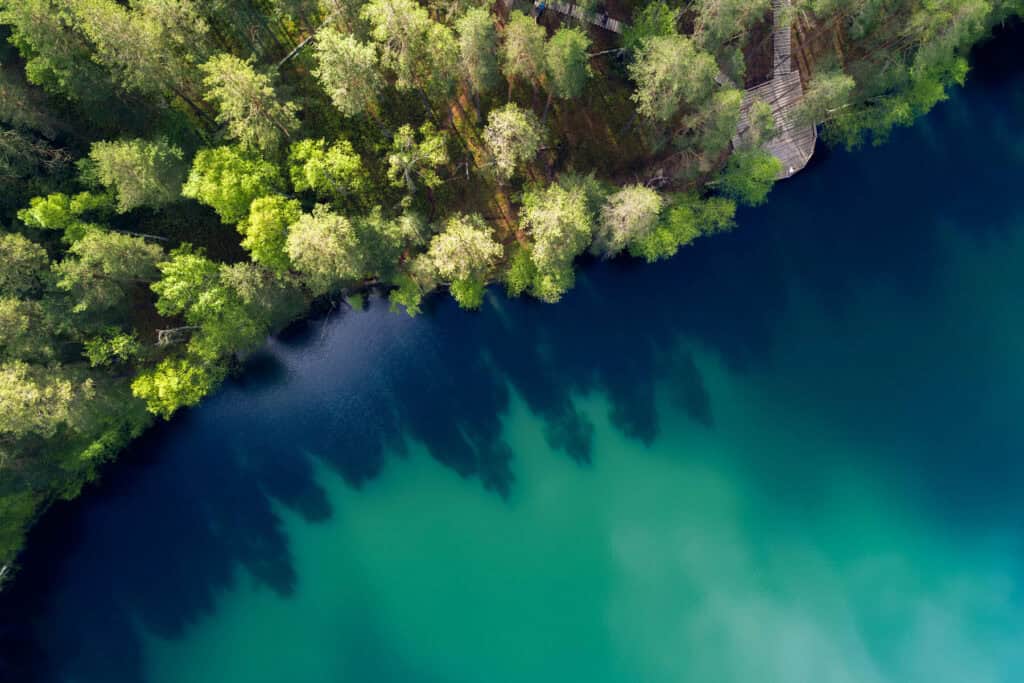
The best campsites in Latvia
If you are looking for a little more creature comfort, or want to avoid bringing too much camping equipment with you, there are a wide range of organised campsites across the country. These typically offer a range of accommodation options, from a place to pitch your tent to little wooden cottages, though they vary greatly in terms of breadth and age of facilities.
Some offer sophisticated ‘glamping’ experiences, while others appear to have been barely renovated since their construction during the Soviet occupation. They are often in fine locations along the coast or in a lakeside setting. The following five campsites have been selected based on the facilities offered and their location close to worthwhile sights.
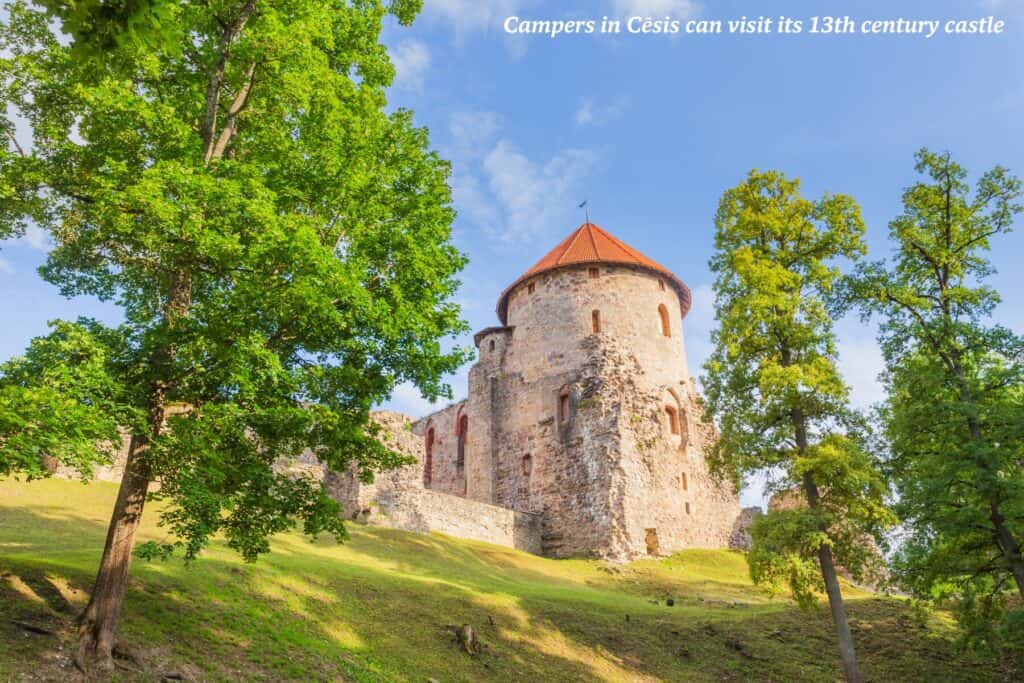
Žagarkalns, Cēsis
The town of Cēsis, centred on its impressive castle, built by German crusaders at the start of the 13th century, is among the most picturesque in Latvia. The Žagarkalns campsite occupies a great spot on the bank of the River Gauja around 3km from the centre of town.
The offer here includes places for tents, trailer spots with electricity supply, and small wooden cottages. They have an assorted range of river craft for hire to allow you to get the most out of the riverside site, as well as bicycles for exploring on dry land. A couple of kilometres further downstream, the Ozolkalns campsite has a broadly similar offer.
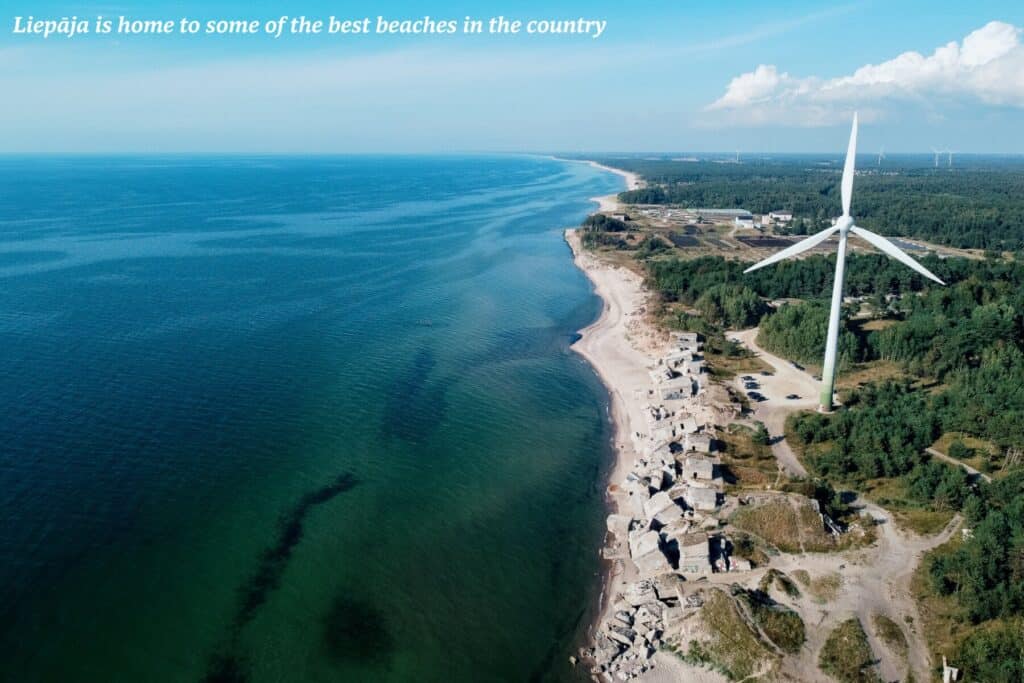
BB Camping, Liepāja
On the shores of the Baltic, Liepāja is Latvia’s third city, home to an enticing combination of fine beaches, Art Nouveau architecture and a lively entertainment scene. It will have the opportunity to showcase its charms as European Capital of Culture in 2027.
BB Camping lies some 7km north of the city centre, just beyond the suburb of Karosta, a neighbourhood whose origins lie in a Tsarist (and later Soviet) military base. It sits in trees close to a small lake, with wakeboard and SUP board rental, and has an extensive accommodation offer, including basic tent pitches and camper sites, wooden huts resembling overturned boats, and fully equipped ‘glamping tents’. There is also an on-site café.
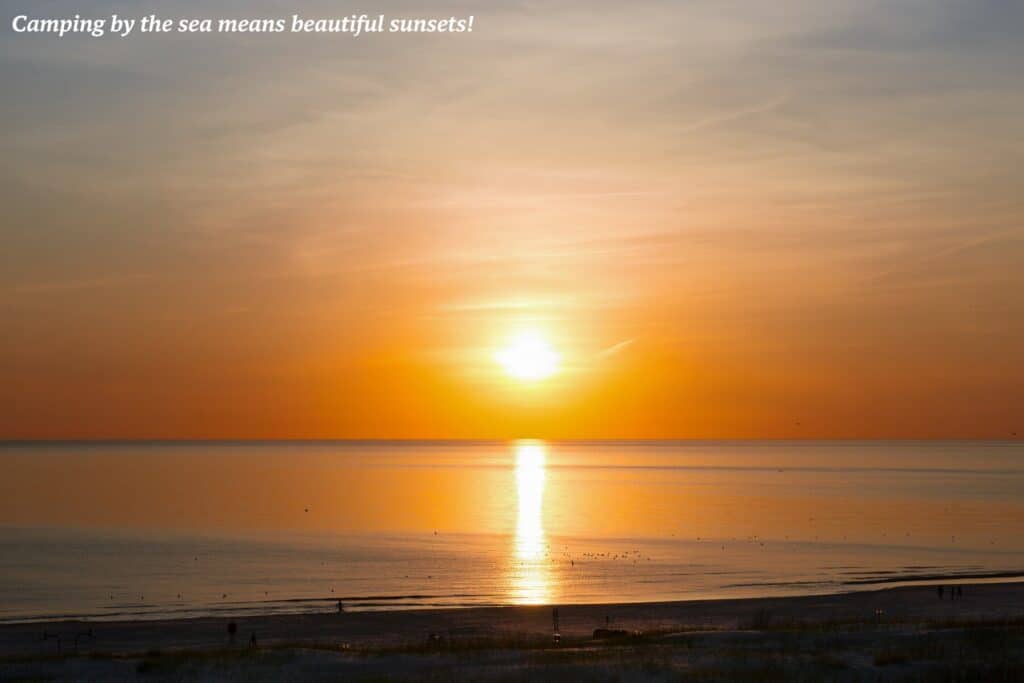
Piejūras Kempings, Ventspils
While smaller than Liepāja, the coastal resort of Ventspils packs another impressive offer for visitors, including an interesting historic centre, a good beach and some high-quality new attractions such as the VIZIUM Science Centre.
This wooded campsite has a great location, within walking distance of both the city centre and the beach. It is a neighbour of the engaging Seaside Open-Air Museum, an assemblage of wooden rural buildings from the 19th and 20th centuries. It offers both tent and trailer spots, as well as accommodation in wooden cottages. The grounds are nicely landscaped, and include a café and sports facilities. Bicycle hire is also available, offering a great option for travellers looking to make their own way around the rather scattered sights of the city.
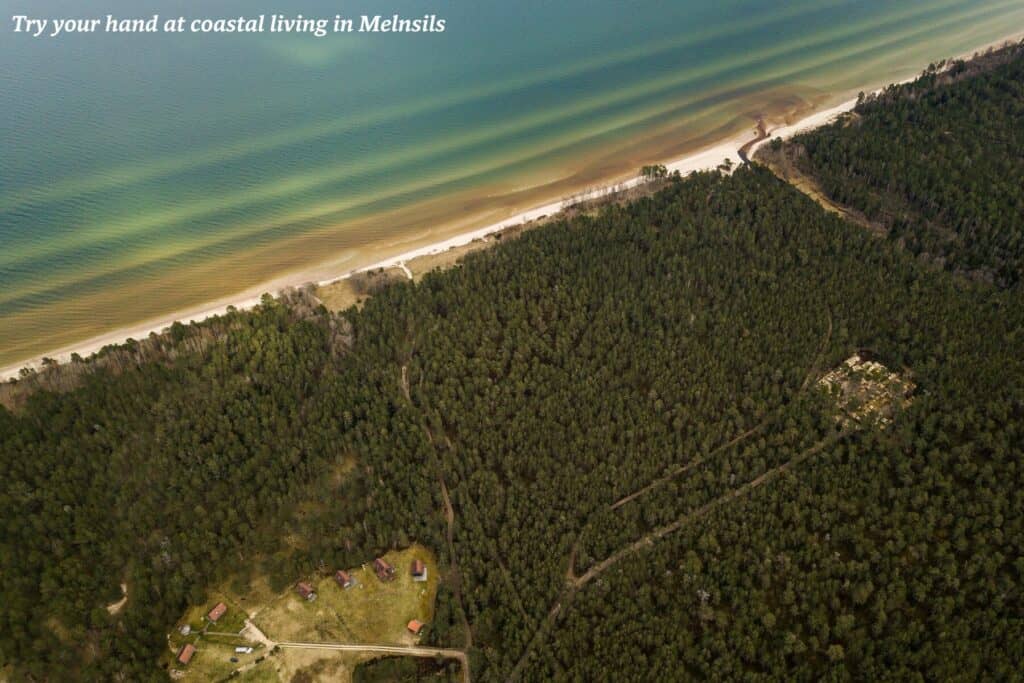
Melnsils
This beachside campsite on the Gulf of Rīga coast offers places for tents and trailers, as well as an imaginative range of structures converted into accommodation, among them large wooden barrels, former military bunkers and an old motorboat. There’s even a pink-toned ‘love boudoir’.
The on-site pub doles out both burgers and more local fare, such as herring with cottage cheese and boiled potatoes. Be sure to try sklandrausis, a circular sweet open pie made from rye dough and filled with a potato and carrot paste. Melnsils campsite is family oriented, with kayak and bicycle rental, and can be noisy in peak season.
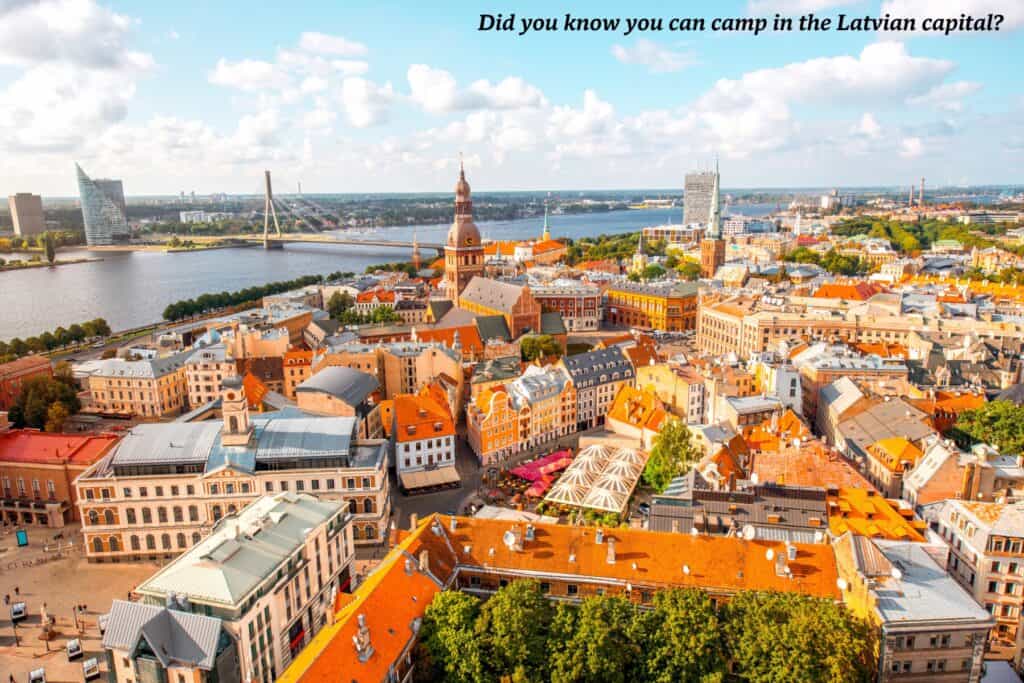
Rīga City Camping
This is by no means the most attractive campsite in Latvia, and can get busy in summer, but its location on the island of Ķīpsala, a walkable distance across the Daugava River from Rīga’s Old Town, provides the opportunity to camp while enjoying the many attractions of the Latvian capital. It offers tent and trailer pitches with a shower and toilet block.
While in the city, be sure to check out its impressive selection of Art Nouveau architecture.
The practicalities
The summer months of June, July and August are peak camping season in Latvia, when days are long and temperatures are warm but rarely oppressive. The months of May and September can also offer great camping, though the weather can be unpredictable, and you should make provision for colder snaps. Wet spells are possible at any time, when Latvia’s historic towns come into their own.
Many campsites (for example Žagarkalns and Rīga City Camping) are open only from mid-May to mid-September. Some advertise year round opening, though you should certainly check in advance if planning to camp out of season.
For more information about when to travel, and what you need to know before you book, see the Latvia travel advice on the GOV.UK website.
Can’t get enough of the camping lifestyle? Our guide to camping road trips in the UK has plenty of options for travellers looking to extend their time in the great outdoors.
More information
For more information, see our upcoming guide to Latvia or head to Latvia’s official tourism portal for an extensive database of tourist attractions, accommodation, events and other tourism-related content.
The Tourism Department of Investment and Development Agency of Latvia (LIAA) is the national tourism board. Check out their website and explore a land where ancient traditions meet modern wonders, and where every corner tells a story waiting to be discovered.
